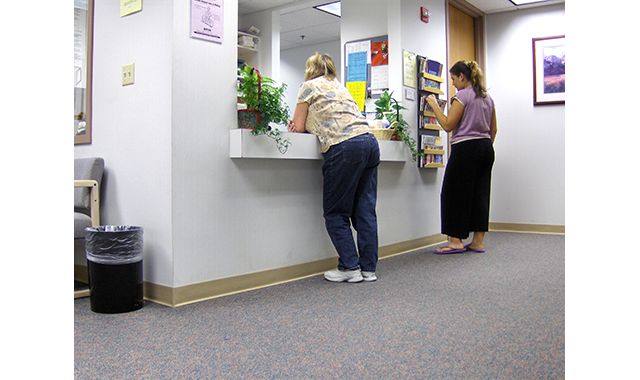- Best Practices New Normal
- Digital Dentistry
- Data Security
- Implants
- Catapult Education
- COVID-19
- Digital Imaging
- Laser Dentistry
- Restorative Dentistry
- Cosmetic Dentistry
- Periodontics
- Oral Care
- Evaluating Dental Materials
- Cement and Adhesives
- Equipment & Supplies
- Ergonomics
- Products
- Dentures
- Infection Control
- Orthodontics
- Technology
- Techniques
- Materials
- Emerging Research
- Pediatric Dentistry
- Endodontics
- Oral-Systemic Health
Reducing lost dental patients
Patient attrition, otherwise known as lost patients, is one of the most important factors in figuring out how to improve short and long-term practice production.

Patient attrition, otherwise known as lost patients, is one of the most important factors in figuring out how to improve short and long-term practice production. While the ultimate objective of every dental practice-in addition to providing excellent clinical care-is to have a productive and profitable business, that’s impossible to achieve when patients are lost. So, while you will always lose a certain number of patients due to unforeseen circumstances like patients moving or changing insurance, keeping your patient attrition rate low should always be part of your production growth strategy.
The top 10 percent
In a 30-year ongoing study of top 10 percent producing practices, Levin Group found that these practices have a patient attrition rate of approximately 7–9 percent, while most other practices have an attrition rate of 12–15 percent. This 50 percent difference means that, relative to the average practice, top producing practices can increase their patient base by approximately 70 percent every 10 years or approximately 360 percent compounded over a 40-year career.
Four ways to decrease patient attrition
One of the most important goals for every practice is to decrease patient attrition. The following four principles can help you accomplish this goal and increase your production in the short and long-term.
- Set a goal of every patient leaving the office with their next appointment. It has been well demonstrated by the Levin Group Data Center that practices that strive to have patients leave with their next appointment scheduled retain more of their patients. Patients who do not have appointments are potentially lost to the dental practice. This has severe consequences on long-term production. Every dentist should keep in mind that every dollar that is lost results in minutes, hours, days, months or years longer that the dentist must be in practice in order to reach financial independence.

- Implement the one-day rule. The one-day rule states that any patient who is overdue for an appointment by one day will be called that day-no matter what. In many cases, the practice will reach the patient’s voicemail, and this is where scripting becomes critical. Whether it is a live conversation or a voicemail script, the practice wants every patient to receive the right messaging about why the practice is calling. Your scripts must be positive, energized, and focused on caring and compassion for the patient. This will come across as five-star customer service.
- If you don’t reach the patient, then follow up. Follow-up is a critical aspect of any business and, unfortunately, dental practices typically aren’t very good at it. The front desk staff often feels pressed for time as they are dealing with patients, scheduling, insurance issues, and much more. But as critical as it is to follow the one-day rule, it is equally as critical to follow up if the patient is not reached and scheduled. Levin Group teaches a nine-week follow-up process that has outstanding results based on the data. When the nine-week follow-up method is utilized, the average patient response time to schedule is 4.1 weeks. This is a fascinating finding that shows that follow-up can have a dramatic impact on increasing practice production and reducing patient retention.

- Invite patients back to the practice every six months. Some patients will be lost to the practice, but a percentage of them will want to come back for one reason or another. By making a concentrated effort every six months to invite them back with an incentive, you are creating an ongoing program where some patients will gradually return. If a patient has not been to the practice within 18 months, they become the equivalent of a new patient joining the practice.
Summary
Patient attrition is one of the most overlooked but most important factors in practice production and a successful career. Implement the four principles described above to help lower your patient attrition rate to the 7- 9 percent range, which is typical of top-producing practices.
